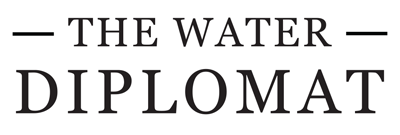The Road to New York
9 Mar 2023
Experts warn that UN Water Conference does not build sufficiently on Mar del Plata
A recent article by prominent water experts warns that the upcoming UN Water Conference does not build sufficiently on lessons from its highly successful predecessor, the UN Water ...
4 Mar 2023
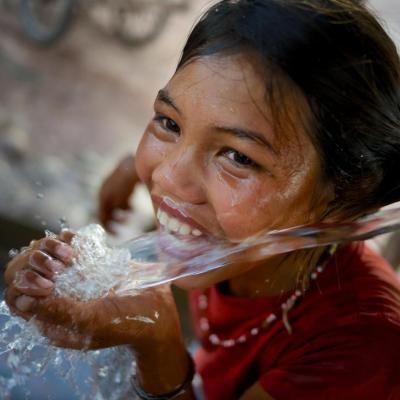
Interview with Catarina de Albuquerque 27/02/2023 Chief Executive Officer, UN-hosted Sanitation and Water for All global partnership Tobias Schmitz: For those people who...
1 Mar 2023
Hearing the Unheard for the UN Water Action Agenda
The UN 2023 Water Conference (UN Water 2023) will take place in March at the UN Headquarters in New York. It has been 46 years since a UN Water Conference was last held. The vision...
10 Mar 2023
Resilient Cities Network launches water resilience program ahead of UN Water Conference
Water resilience is becoming an increasingly important topic for urban centers around the world. Withclimate change exacerbating water-related challenges such as floods, droughts, ...
International Water Law and Transboundary Water Cooperation
8 Mar 2023
The UN Water Conference and International Water Law
Tobias Schmitz: In a recent article in the International Journal of Water Resources Development, Professors Asit Biswas and Cecilia Tortajada argue that the upcoming UN Water Confe...
8 Mar 2023
Vanuatu’s fight for climate justice goes to the Hague
105 of the 193 member states have supported Vanautu’s call to request that the International Court of Justice (ICJ) provide clarification on the obligations of states to protect th...
24 Feb 2023
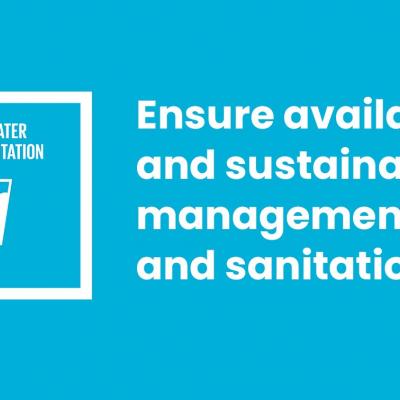
A new report launched by UN Water on the 16th of February reviews the range of targets and indicators across Sustainable Development Goal 6 (SDG6) on water and sanitation and revie...
Water in Armed Conflict and other situations of violence
4 Mar 2023
Progress made in documenting damage to water resources and infrastructure in Ukraine
A year into the war in Ukraine, progress is being made in documenting the damage to waterresources and infrastructure, although many gaps still remain. The Ukrainian government ...
17 Feb 2023
Health risks in Türkiye and Syria due to lack of functional water and sanitation systems
The earthquake that struck in Türkiye and Syria on the 6th of February has destroyed water and sanitation infrastructure in a wide region. Since then, areas in both countries affec...
2 Mar 2023
Peace and Water: GOWP brief calls for urgent rethinking of approach to water management
The Global Observatory for Water and Peace (GOWP) has released a brief ahead of the upcoming United Nations Mid-Term Review Conference in March 2023, highlighting the urgent need t...
Knowledge Based, Data-Driven Decision Making
2 Mar 2023
'Forever' pollution map of Europe created through collaborative journalism
A collaborative research effort by journalists and media across Europe has resulted in the development of an interactive map of pollution by per- and polyfluoroalkyl substances (PF...
16 Feb 2023
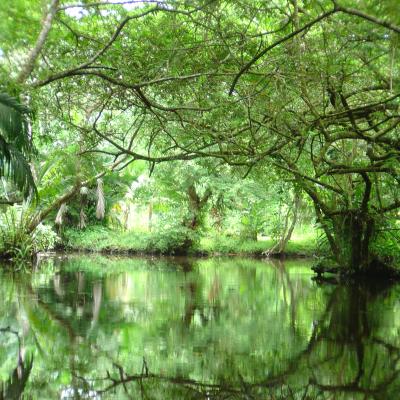
A new paper compiled by a group of 22 scientists bundles together a range of high-level expert summaries of the critical benefits to humanity of maintaining freshwater biodiversity...
8 Feb 2023
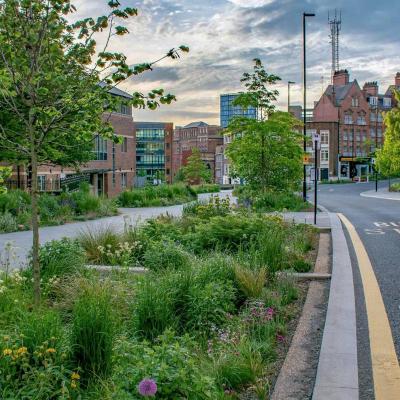
Researchers at the India desk of the World Resources Institute have published a working paper on the effects of expanding built up areas on water bodies, plant cover and permeable ...
Finance for Water Cooperation
10 Mar 2023
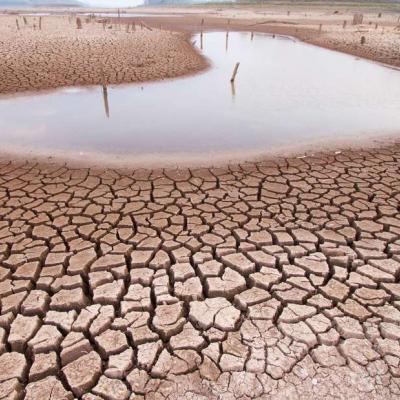
Investing financial resources in nature based solutions for water is an essential means to avoid financial risk. In February, the Carbon Disclosure Project sent an open letter to g...
22 Feb 2023

Tobias Schmitz: The Sanitation and Hygiene Fund is a new UN entity on the international scene. Can you give us some background on the thinking around its emergence? Dominic O’N...
8 Mar 2023
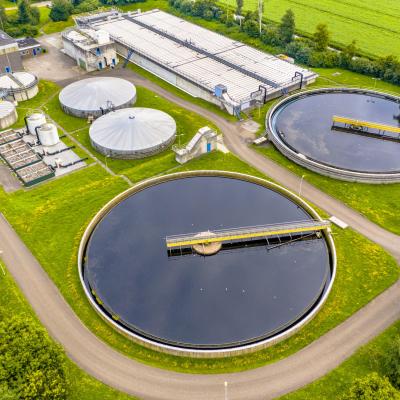
A new publication on trends in the water market has estimated that the global water treatment market is projected to grow at a compound annual growth rate of some 7% per year in th...
National and Local News
20 Feb 2023
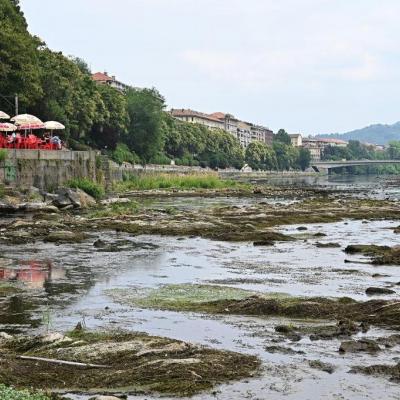
Images from the Copernicus Sentinel 2 satellites from February 15th show reduced flow of the Po River in Italy. This is the second year in a row that the Po valley has been affecte...
10 Mar 2023
Decentralised sanitation system can reduce pollution in Nairobi says UN-Habitat official
Effective management of sanitation and wastewater will lessen the pollution load on local water resources in Nairobi and other urban areas of Kenya. The growing challenge in den...
22 Feb 2023
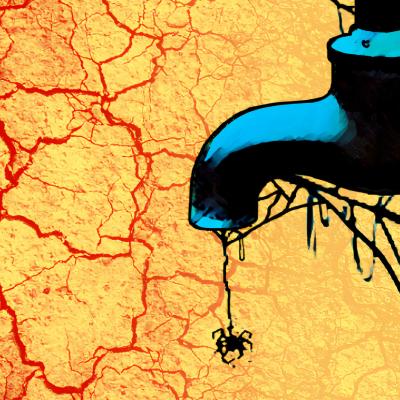
Water security in India refers to the availability of adequate and clean water resources to meet the country's growing water demand, while ensuring the sustainability of the water ...
9 Feb 2023

NYANDARUA COUNTY, KENYA – Situated just a few kilometers offKenya’sSasumua Dam is 58 years old Phillis Wanjiru a mother of four children who has defied all the odds to grow crops t...
The Road to New York
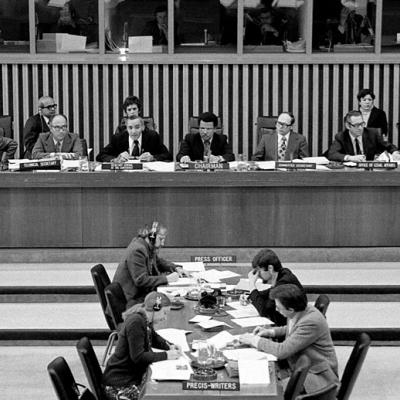
Experts warn that UN Water Conference does not build sufficiently on Mar del Plata
A recent article by prominent water experts warns that the upcoming UN Water Conference does not build sufficiently on lessons from its highly successful predecessor, the UN Water Conference at Mar del Plata, Argentina, in 1977. The article , published in the International Journal of Water Resources Development and authored by world renowned experts, Professors Asit Biswas and Cecilia Tortajada, reviews the preparations and the lasting impact of Mar del Plata, Argentina in 1977, and warns that the upcoming UN Water Conference does not build sufficiently on lessons from its successful predecessor.
In their article, the authors point out that in the past, such thematic UN conferences have been preceded by the appointment of a mandated Secretary General with a high profile and who is known for his or her interest in water issues. Leadership is an important factor, and in 1976 the Minister of Irrigation and Hydropower, Yahia Abdel Mageed, was appointed to carry out this task. His first step was the selection of team of experts who could advise on the contents of the conference and a draft plan of action.
The Mar del Plata conference set in motion national studies resulting in national reports ‘on the availability and use of water and comprehensive assessments of planning needs and management practices’. Countries were therefore encouraged to prepare papers for the conference on their water problems and potential solutions, preparing themselves technically for the upcoming conference. Secondly, the conference was to set in motion the first International Drinking Water and Sanitation Decade, 1981-1990, laying the basis for joint international action to improve access to water and sanitation at a global scale.
The UN 2023 Water Conference is the first high-level meeting on water since the 2015 adoption of the Sustainable Development Goals (SDGs), which include goal 6 on water and sanitation to ensure availability and sustainable management of water and sanitation for all.
Since Mar del Plata, fundamental changes have taken place in the size of the global population, the size of the world economy, the reduction of poverty, and the emergence of climate change as a threat to water security. This again requires future oriented planning both at the global and the national levels.
The authors warn that in the current planning, the world’s current and future water problems are not being analysed sufficiently holistically. In addition, rather than lasting two weeks, the conference is lasting two days, which is not enough to delve into the breadth and depth of water issues. Some key issues are not on the table, for example the lack of access to water for indigenous people in developed countries, the quality of global data for planning purposes, or the aim to make water utilities carbon neutral.

Catarina de Albuquerque speaks to The Water Diplomat
Interview with Catarina de Albuquerque 27/02/2023
Chief Executive Officer, UN-hosted Sanitation and Water for All global partnership
Tobias Schmitz: For those people who do not work in the water, sanitation or hygiene (WASH) sector, there may not be a strong awareness of the importance of safely managed water, sanitation and hygiene for our health, for social justice, for economic development and for all life on the planet. How can we do a better job of communicating the importance of WASH to other sectors and professions?
Catarina de Albuquerque: I think there are several issues with water and sanitation. First, it’s something that a lot of people don’t discuss or prioritise – like talking about the air that we breathe. There is obviously a taboo around talking about sanitation. And when it comes to water, most of the infrastructure is under the ground and is invisible to the eye. In the Global North, people can just turn on their taps and access to water is a given. People in the Global South who are “better off” have another solution: they buy bottled water.
For those who have to walk long distances to fetch water, there is a fatalist vision of this problem, because this is the way it has always been. Additionally, the other issue is that there is a ’plan B,’ so to speak, for when you don’t have access to water and sanitation. For example, if you don’t have a latrine, you can defecate behind a bush. If you don’t have safe water, you boil it. Even if this has long term effects on your health, you don’t feel it right away, so it masks the lack of adequate access.
So what’s the solution? First, we need to talk about these issues and their connections to achieving human rights. I also believe we need to tell more stories so that the public can understand the plight of those who lack access: for example, the girls who cannot go to school or the women who cannot work. It is these connections that resonate with people who are not working in our sector. Stories have more power to attract people than data (although data, of course, is very important too). For example, the UN-hosted Sanitation and Water for All global partnership (SWA) recently launched a campaign called ‘Justice Begins Here’ which demonstrates that water and sanitation are preconditions for social justice. This campaign puts a human face on these rights.
Tobias Schmitz: We are fast approaching the first UN Conference uniquely dedicated to water in 46 years. Going into the conference, what are your thoughts currently about your message to member states, water sector organisations, financial institutions about how universal access to water, sanitation and hygiene can be achieved?
Catarina de Albuquerque: One of the main things we need to do in the run up to the Conference, is to think about how we follow up and stay accountable. Otherwise, on 25 March, everything will be forgotten, and then by the following Monday, we will go back to business as usual as if the meeting never happened. This is detrimental to the sector. We know that there is a Water Action Agenda, we know that stakeholders are being encouraged to make commitments. I don’t believe that reconvening under the UN Political Forum every summer will make sure that there is appropriate follow up. However, there are already mechanisms in place, including SWA’s Mutual Accountability Mechanism that can help us follow up.
Second, political commitment and leadership are key. We need commitments at the highest level – such as through Presidential Compacts and other initiatives – in order to prioritise water in all UN Member States.
And finally, human rights are a good indicator to assess whether we are doing things correctly or if we are forgetting about certain people we are supposed to serve. Are we involving those who have been most excluded? Are we allowing for participation? Do we have accountability mechanisms in place?
Tobias Schmitz: One of the things that comes to mind is that the FAO for instance has been calling for National Water Roadmaps in the context of the UN Water Conference, and I believe that towards the end of General Comment no. 15 on the human right to water, there is also mention of such road maps. So apart from political will, I suppose you also need a roadmap for the implementation of these objectives?
Catarina de Albuquerque: One of the elements of an ‘enabling environment’ to achieve our water, sanitation and hygiene goals, is to have a legislative, regulatory and policy framework. This includes having a resourced strategy or plan for the sector in place. Additionally, countries need to have sufficient institutional capacity. We need leadership to make this happen.
Tobias Schmitz: Precisely, now I believe that Sanitation and Water for All has been very active recently in providing clarity for parliamentarians about anchoring the rights to water and sanitation into law and national policy, about promoting a Mutual Accountability Mechanism for joint delivery on SDG 6 ambitions, and about delivering social justice for those who still do not have access to safely managed services. Can you guide us on how political leaders, organisations and individuals can best work with SWA to anchor the HRWS, ensure accountability and ensure that no-one is left behind?
Catarina de Albuquerque: Obviously we know that parliaments can and should play a crucial role because they pass legislation, they revise and approve budgets, and they hold the government to account. We started receiving requests from partners at the country level saying: we need guidance for parliamentarians.
SWA has already produced a handbook for ministers of finance on water and sanitation which has helped us to communicate outside the water sector. That’s why we decided to do one for parliamentarians. In terms of accountability, we are working with our partners - including almost 90 UN Member States - through SWA’s Mutual Accountability Mechanism, which is at the disposal of the Water Action Agenda. If UN Member States and other stakeholders want to table their commitments under our mechanism, we will do the follow up.
Tobias Schmitz: In terms of a reality check on progress, current assessments of progress on SDG 6 show that we collectively need to quadruple our efforts if goal 6 is to be achieved by 2030. This will require extra effort also from national water and sanitation related ministries, from financial institutions, from the private sector, and from Non-Governmental Organisations. Already, some organisations such as the Asian Development Bank are coming forward with strong commitments. Where are the key financial obstacles currently to accelerating progress and how can they be removed?
Catarina de Albuquerque: Look, we shouldn’t only talk about finance because we might give the impression that problems can be solved by dumping money on a country. We know that there is no absorption capacity, which is why discussions about money must go hand in hand with discussions about laws, institutions, regulations, national plans, etc. For example, we are working with the World Bank to organize a closed meeting for Ministers from Southern and Eastern Africa. The World Bank is willing to double the investments in the region, but this alone is not enough to make the sector function. We also need to have a discussion about political leadership. Our partner, the Asian Development Bank, is having the same conversations in their region. Without an ‘enabling environment,’ our partners know we will not be able to attract the money, use the money, and have the impact that we are looking for.
Tobias Schmitz: So, it is not so much about the money as the effectiveness of those investments and the capacity to put them to good effect. Another topic: our world is becoming more and more complex, and there are some risks outside the WASH sector that are affecting it. In its 2023 Global Risks Report, the World Economic Forum listed ten global risks such as the cost of living, extreme weather and natural disasters, geoeconomic confrontation, failure to mitigate climate change, social polarisation, etc., which are all related to water. How can we best protect essential WASH services against these global risks?
Catarina de Albuquerque: If we think of natural disasters, climate and conflict, an important element is to make sure that we have the systems in place to respond adequately to all of these risks. This ensures that we are more resilient when they take place. For example, when we plan water allocation in a water scarce region or country such as southern Europe, Australia or the United States, shouldn’t we consider the decreasing availability of water before giving out licenses for types of agriculture that require huge amounts of water? We need a sector plan that takes these risks into account. At SWA, we bring together water and climate communities to incorporate water planning into climate commitments (Nationally Determined Contributions or National Adaptation Plans) and vice versa.
Hearing the Unheard for the UN Water Action Agenda
The UN 2023 Water Conference (UN Water 2023) will take place in March at the UN Headquarters in New York. It has been 46 years since a UN Water Conference was last held. The vision of the Conference is explicitly inclusive: “The Conference and its preparatory process will be organized based on the following three principles:
Inclusive: both in terms of (a) the Conference process (ensure vertical and horizontal
inclusiveness) and in terms of (b) the results (leaving no-one behind). This participatory, collaborative and inclusive approach helps to ensure strengthening capacity at all levels: individual, informal and institutional”. (see https://sdgs.un.org/sites/default/files/2021-11/Vision_Statement_UN2023_Water_Conference.pdf)
Yet those systematically left behind are also left behind in the Conference. The poorest of the poor, those at the most distant edges of the water discourse, those who trek long distances every day to collect water, those that the Conference will develop strategies to include, are largely excluded from participating in it.
Their right to express, at the highest level, the daily human rights violations that they experience is being violated. This is problematic for the UN – the global champion of human rights. The human rights-based approach, which is central to the work of End Water Poverty and its more than 150 members in 80 countries, is based on the principles of universality, indivisibility, equality and non-discrimination, participation, and accountability. It is closely aligned with the concept of water integrity as espoused by the Water Integrity Network, which takes root in transparency, participation, accountability and anti-corruption. UN2023 is failing to live up to the principles of both participation and accountability. How can processes be accountable when the very people that they will affect are not at the table? How can this conference enable both ‘duty-bearers’ to meet their obligations, and ‘rights-holders’ to claim their rights when the rights holders cannot be present?
They are excluded by the cost of travelling to the USA, the difficulties in getting visas to enter the USA (even people with power and status struggle with this!), and the accreditation criteria and protocols of UN Water 2023 which exclude grassroots groups that are not legally registered in their country of origin. How then do the voices of the waterless get to be heard in the UN conference? By proxy? Through NGOs and government representatives? How do grassroots groups become part of the conversation at the national level, let alone the international level?
The multilateral system is premised on the idea that Member States have the interests of their citizens at heart. The increasing repression of civic space tracked annually by organisations like CIVICUS, from tokenistic public participation processes, to intimidating, threatening, and assassinating activists, to strategic lawsuits against public participation (SLAPP), and the prevalence of draft legislation that restricts and limits civil society in many countries, suggest that this is not the case.
The UN is now missing a significant opportunity to convene the voices of the waterless, the defenders of water, those who see water from a different end of the lens; to bring to the table those who object to the increasingly neo-liberal agenda of the global water sector, the emphasis on the role of the private sector, and the elusive potential of ‘blended finance’.
End Water Poverty, the Water Integrity Network and partners[1] are hosting an event in New York to create a space for groups unheard in local, regional, and global processes and systems to bring their lived experience to the fore through videos. Others, like the Government of the Netherlands, are engaging with CSOs and networks and supporting their participation. But this is not sufficient.
If the unheard are not at the conference, every effort should be made to make sure they are front and centre in the Water Action Agenda. The UN2023 Conference is a significant opportunity to define a “bold” Water Action Agenda that, in the UN Secretary General’s words, “must give our world’s lifeblood the commitment it deserves” and gives space for the voices of rights holders in safeguarding the human rights to water and sanitation. Water Action plans must contribute to SDG16 for just, peaceful and inclusive societies, if they are to meaningfully bring us forward on SDG6.
Human rights violations are a symptom of structural inequality, and access to safe, affordable, sustainable water and sanitation remains divided by race, class and gender. The Water Action Agenda must foreground the agency and voices of groups marginalized by poverty, gender, religion, ethnicity, citizenship (or lack of it), or any other reason. These communities must be deliberately and consciously sought out and listened to, by those at local, regional, national or international level who have the power to act. As the UN Special Rapporteur on the human rights to water and sanitation says “People are the ones organising and coping with water scarcity. They are on the frontlines of the water crisis [and] have the knowledge of how to sustainably manage water in their territories. They are ensuring that rights holders are at the forefront of the water agenda – without them, there is no water agenda...”
[1] End Water Poverty, OHCHR, the UN Special Rapporteur on the Human Rights to Safe Water and Sanitation; Water Integrity Network (WIN); ONGAWA Engineering for Human Development; Simavi; WASH United/ Make Rights Real; Coalition Eau; ANEW; Water Youth Network; United Youth for Peace, Education, Transparency and Development in Liberia (UYPETDL) Inc.; RWSN; KEWASNET; Water Witness International; Freshwater Action Network Mexico; Redes del Agua Latin America; ICLEI - Local Governments for Sustainability; Tahzing Dong, Bangladesh; United Cities and Local Government (UCLG) and ESCR-Net, with Member State support from Liberia and South Africa.
Resilient Cities Network launches water resilience program ahead of UN Water Conference
Water resilience is becoming an increasingly important topic for urban centers around the world. With climate change exacerbating water-related challenges such as floods, droughts, and water scarcity, cities are looking for ways to build more resilient water systems. In response to this growing need, the
Resilient Cities Network has launched a water resilience program ahead of the UN 2023 Water Conference be held on March 22-24, in New York City.
"The challenges associated with water are becoming more severe, and the demand for water is increasing. Cities need to invest in resilient water systems to cope with these challenges and ensure a sustainable water supply for all", said the Resilient Cities Network in a statement.
"The UN Water Conference is a critical opportunity for cities to come together and discuss the challenges and opportunities associated with water. By working together, cities can develop more resilient and sustainable water systems that can adapt to the challenges of the future", the statement
further reads.
To reiterate the importance of water resilience, the Resilient Cities Network has highlighted several practical cases, including the City of Cape Town, which faced a severe water crisis in 2018 due to prolonged drought. Another example is The Hague, a coastal city that is particularly vulnerable to the
impacts of climate change, such as sea-level rise and extreme weather events.
“We have taken various steps to enhance our water resilience, including building flood protection measures and investing in sustainable water management solutions,” said Robert van Asten, The Hague’s Deputy Mayor for Mobility, Infrastructure, and Water. He emphasized the importance of
collaboration between cities and the need to learn from each other to build more resilient water systems.
The launch of the water resilience program comes ahead of the UN Water Conference, which will bring together stakeholders from around the world to discuss water-related challenges and opportunities. The conference will focus on the implementation of the Sustainable Development Goals related to water, including ensuring access to safe and affordable water for all and improving water quality and efficiency.
"The goal of our water resilience program is to support cities in developing a holistic approach to water management that considers social, economic, and environmental dimensions of water", said Lauren Sorkin, Executive Director of the Resilient Cities Network. "By sharing knowledge and experience, we
hope to build a network of water-resilient urban centres that can adapt to the challenges of the future".
International Water Law and Transboundary Water Cooperation
The UN Water Conference and International Water Law
Tobias Schmitz: In a recent article in the International Journal of Water Resources Development, Professors Asit Biswas and Cecilia Tortajada argue that the upcoming UN Water Conference has not been built sufficiently on the legacy of the last UN Water Conference held in Mar del Plata in 1977. To what extent do you think that the UN 2023 Water Conference is building sufficiently on the legacy of International Water Law since 1977?
Dr Mara Tignino: Thank you. I will base my answer on the concept paper prepared by the Secretariat of the Conference and in particular the Interactive Dialogue # 4: Water for Cooperation, which reserves a strong role for two topics, i.e., transboundary cooperation and the protection of water during armed conflict, so I would say that the UN Conference is very important because it is a multilateral forum where, for the first time, it will be possible to discuss the protection of water in times of armed conflict. There are currently some references to the work of the ICRC but also to the Geneva Principles on the Protection of Water Infrastructure . Therefore, compared to the 1970’s, the UN is more ready to accept that the issue of armed conflict is discussed in this arena.
Tobias Schmitz: Looking back to the period since Mar del Plata, pretty much all of international water law has developed since this period: the UN Watercourses Convention, the Helsinki Convention, the recognition of water, sanitation and a healthy environment as human rights. Therefore, we have a much stronger legal framework that we did at the time of Mar del Plata.
Mara Tignino: Yes of course, there have been many developments since then. Perhaps some elements of these developments can already be found in the Mar del Plata Action Plan in particular: if you look at the human right to water for instance, its foundations are often, amongst others, referred to the Mar del Plata Action Plan. Of course since then a lot has happened: the resolutions by the United Nations General Assembly and the United Nations Human Rights Council on the human right to water and the appointment of a Special Rapporteur on the Human Right to Water. Moreover, two global conventions on transboundary water resources have entered into force, namely the Convention on the Protection and Use of Transboundary Watercourses and International Lakes and the Convention on the Law of the Non-Navigational Uses of International Watercourses.
Tobias Schmitz: I understand. Now if we go a bit deeper, and in particular from the point of view of Sustainable Development Goal 6, can we say that the development in international water law provide a solid base for the equitable and sustainable management of water and sanitation?
Mara Tignino: There has of course been progress with the elaboration and signature of River Basin Agreements based on international water law, but if we look at the progress report on SDG 6.5.2, [the indicator that looks at the percentage of a transboundary basin within a country that is covered by a transboundary agreement (TS)], there are only 26 countries whose transboundary basins are covered by a river basin agreement. So there is still a lot to be done. I would also like to call for attention to groundwater, as there is a real lack of transboundary agreements on shared aquifers in particular. It is important for the UN Water Conference to highlight the issue of groundwater resources and shared aquifers and ask to develop more transboundary agreements on these crucial resources. Most of our water supplies ultimately come from groundwater.
Tobias Schmitz: Although it is true that there are currently few transboundary agreements which explicitly focus on shared aquifers, we do also have some interesting examples: is it perhaps interesting from an academic perspective to look into these cases and draw lessons from them on how such agreements can best be supported?
Mara Tignino: Yes, it is very important to engage in the sharing of practises and experiences: in Geneva we have the Genevese Aquifer Agreement, which was the first transboundary aquifer agreement, and this is a very good example of cooperation between the Canton of Geneva and France and the experts note that the parties were able to go beyond the concept of sovereignty and were able to agree that it was a common resource and that therefore a common solution to a common problem needed to be sought - this was a development stimulated by the reduction of the water table in the 1970’s. Then of course an important case is the Guarani Agreement, which is one of the biggest aquifers, and then there is the project of the Geneva Water Hub and partners to help to develop a framework for the joint management of the Senegalo-Mauritanian aquifer. This is a very interesting example because we see the potential involvement of two River Basin Organisations, i.e., the OMVS and the OMVG. We do not know what will be the result of this process, but it is already notable in that these two river basin organisations are involved.
Tobias Schmitz: I read a paper recently which sketched the evolution of international water law and essentially arguing that originally international water law focused predominantly on the roles and rights of individual states which have shared water resources, and in particular, the reasonable and equitable use of shared waters. Over time, the paper argued, things have become more complex because the focus has moved away from for instance the development of infrastructure on shared watercourses, and more towards an environmental focus whereby ‘environmental flows’ and the protection of the river basin have become more prominent. Beyond this, from an exclusive focus on states, there has been an increased attention for the role of non-state bodies such as River Basin Organisations, actors in civil society, individual rights holders, etc. Would you agree with this assessment?
Mara Tignino: Yes, International Water Law is evolving, and although it is still the case that it is mainly focused on the relations between states, other actors are increasingly involved, and indeed both environmental law and human rights law have contributed to its evolution. There are different areas where local communities can intervene in the management of shared water resources, for example the participation of Water User Associations in River Basin Organisations, the participation of local communities in Environmental Impact Assessment Processes, and of course when transboundary water resources are located in areas where indigenous populations are living. This needs to be highlighted in the conference: international water law is not isolated but has to be informed by environmental and human rights law.
Tobias Schmitz: As you just mentioned in fact, there are two River Basin Organisations actually involved in the process of [promoting the shared management of an aquifer shared by two states, so here we have not just states but River Basin Organisations being involved in agreements on shared water resources. Turning to the issue of the protection of water infrastructure in times of armed conflict and the huge potential of water to stimulate international cooperation: we have the Geneva principles for the protection of water in armed conflict, what is the potential for this aspect to come out in the UN Conference?
Mara Tignino: I am quite confident that this issue will be taken up, as there are already aspects that are referred to in the text. However, the idea of ‘cooperation’ needs to be qualified: it should not just be advantageous to one of the parties. We need to emphasise that such cooperation must be based on international law and based on reasonable and equitable use. Cooperation has a specific meaning and this needs to be elaborated in the conference, especially drawing from international conventions. The concept otherwise is not very meaningful.
Tobias Schmitz: Very interesting , it seems as though you are quite confident about the potential for a good outcome, even if the definition of cooperation needs to be based strongly on international law. Mara, thank you very much for these valuable insights, and we look forward to following you in New York!
Vanuatu’s fight for climate justice goes to the Hague
105 of the 193 member states have supported Vanautu’s call to request that the International Court of Justice (ICJ) provide clarification on the obligations of states to protect the climate system and other parts of the environment the environment for present and future generations. Clarity is also sought from the ICJ on the legal consequences under these obligations for States which, by their acts and omissions, have caused significant harm to the climate system and other parts of the environment for Small Island States as well as present and future generations suffering the consequences of climate change.
Vanuatu, a small island state located in the South Pacific, has recently made headlines for obtaining permission from the International Court of Justice to seek a legal opinion on the obligations of countries to combat climate change. This is a significant step for a country that is one of the most vulnerable to the impacts of climate change, such as rising sea levels, ocean acidification, and extreme weather events.
The decision by Vanuatu to seek a legal opinion on the obligations of countries to combat climate change comes at a time when the international community is struggling to make progress on this issue. The recent COP27 climate summit in Egypt has failed to produce a meaningful agreement on loss and damage, which refers to the compensation that developing countries need to address the impacts of climate change. This failure underscores the urgent need for action on this issue and the importance of legal action to hold large polluting countries accountable.
"This is a matter of life and death for our people. We cannot continue to sit back and watch as our islands disappear beneath the rising seas. We need urgent action to address the root causes of climate change and to hold those responsible accountable for their actions," said Ralph Regenvanu, Climate Change Adaptation Minister of Vanuatu.
Since its decision to seek a legal opinion, the country has received widespread support from other small island nations, environmental groups, and climate change activists. The Pacific Islands Forum, a regional intergovernmental organization, issued a statement expressing its support for Vanuatu's efforts, stating that "climate change poses an existential threat to our region, and we need urgent action to address it."
Commenting, United Nations Secretary-General António Guterres, said "Vanuatu's decision to seek a legal opinion from the International Court of Justice on the obligations of countries to combat climate change is a bold and important step. It is a reminder that those who contribute least to the problem are often the ones who suffer the most from its effects."
However, there are also concerns that seeking a legal opinion from the International Court of Justice may not be enough to address the urgent need for action on climate change, while stakeholders highlight some expected challenges that Vanuatu may face, including the question of jurisdiction of the International Court of Justice: It is unclear whether the court has the jurisdiction to hear a case brought by a small island state like Vanuatu against larger countries that are major contributors to global greenhouse gas emissions.
Despite these challenges, if Vanuatu is successful in obtaining a favorable legal opinion from the International Court of Justice, it could set a precedent that would benefit other countries in similar situations. It would also send a powerful message to the international community about the urgent need for action on climate change and the importance of taking responsibility for the impacts of greenhouse gas emissions. These countries include Tuvalu, Bangladesh, Kenya, Peru, Australia and The Philippines to mention just a few.

Launch of UN-Water report for Improved Integration Across SDG6
A new report launched by UN Water on the 16th of February reviews the range of targets and indicators across Sustainable Development Goal 6 (SDG6) on water and sanitation and reviews options for closer integration across these targets. In describing the motivation for the report, Marianne Kjellen, senior water advisor UNDP, underlined the fact that the task of UN Water is to coordinate the activities of the different UN agencies with water and sanitation related mandates on water and sanitation issues. However, she noted, there has been discussion around enhancing the mutual integration of the work of the different UN bodies on water, especially at the country level, around the joint goal of ‘delivering as one’ and prioritising support to national governments. Some concerns have been raised around the fragmentation of the work of different UN agencies and in particular a lack of coordination between Water, Sanitation and Hygiene (WASH) on the one hand and Water Resources Management (WRM) on the other hand, as they are instituted by different bodies.
To develop a strategy for country level engagement of UN Water through the UN country teams, a study group drawn from UNICEF, UNDP, and the SIWI Water Governance Facility conducted research into opportunities for enhanced integration. The research drew lessons from 11 case studies across a wide range of countries and thematic areas and proposed a list of 18 areas where collaboration can be improved, which are in turn structured around five key outcomes. These outcomes are, in turn, equitable water resource allocation, a focus on sustainable water management, increased flood and drought resilience, more climate resilient WASH, and Integrated Water Resources Management (IWRM). For example, in order to achieve equitable water resources allocation, water allocation for domestic uses needs to be prioritised even against the background of competing water uses. This vision is needed also in the context of inter-basin transfer schemes which may overlook users both in the donor and in the recipient catchment. Also, water infrastructure development must have a multi- purpose orientation from the outset so as not to exclude particular user groups a priori.
Water in Armed Conflict and other situations of violence
Progress made in documenting damage to water resources and infrastructure in Ukraine
A year into the war in Ukraine, progress is being made in documenting the damage to water resources and infrastructure, although many gaps still remain.
The Ukrainian government has requested the United Nations Environmental Programme (UNEP) to assist in the assessment of environmental damage in the country, and already it is estimated that 618 critical industrial or infrastructure sites have been damaged or destroyed.
Also, the Centre for Environmental Initiatives (Ecoaction) Ukraine, working with Greenpeace Eastern Europe, has been mapping environmental damage in Ukraine as the result the Russian invasion of the country. The aims of this research are both to raise awareness of the environmental consequences of the war, and to ensure that environmental restoration is included in Ukraine’s post-war restoration initiatives. The data collected relates to water, land and air pollution as well as wildfires caused by missile strikes and has been cross checked and mapped by Greenpeace.
In parallel, a study led by Oleksandra Shumilova published in Nature Sustainability, focuses specifically on water resources and shows that water infrastructure such as dams, water supply and treatment systems, and subsurface mines have been impacted by the war. The authors state that the conflict in Ukraine is a special case in that the conflict is taking place in an area which features a heavily modified and industrialised water sector, with multi-purpose reservoirs, hydropower dams, cooling facilities for nuclear power plants, water reservoirs used for industry and mining, and extensive water distribution networks for irrigation and household water supply. In total, 64 impact sites were identified, which include disruption of water transfer, surface water pollution, damage to dams, flooding of mines, bacterial pollution, and interrupted hydroelectricity generation. About half of these are located in the Donetsk and Luhansk regions, and in 17 cases, water infrastructure was directly attacked – an act prohibited by the Geneva list of Principles for the Protection of Water in times of Armed Conflict. The authors mention special concern for the large reservoirs along the Dnieper River which are critical for energy production, the cooling of nuclear power stations, irrigated agriculture, and household water supply. In addition, the interruption of wastewater treatment is leading to the pollution of surface waters, and the continuous disruption of water treatment and supply of safe water is generating risks for the spread of diseases, as was already the case with the outbreak of cholera in Mariupol.
Health risks in Türkiye and Syria due to lack of functional water and sanitation systems
The earthquake that struck in Türkiye and Syria on the 6th of February has destroyed water and sanitation infrastructure in a wide region. Since then, areas in both countries affected by the earthquake are in urgent need of humanitarian aid.
In a media release on the 13th of February, Marielle Snel, the Senior Global Humanitarian Waster, Sanitation and Hygiene advisor for Save the Children, stated:
“People in the earthquake-affected areas urgently need safe drinking water and latrines. It’s challenging as water pipes are broken. Once the latrines are in place, waste needs to be safely disposed of to avoid risk of waterborne and vector-borne diseases.
“Sanitation facilities need to be built in a way that considers the safety of women and girls. There needs to be adequate privacy and lighting so they can use facilities without feeling unsafe.”
Save the Children aims to reach a total of 1.6 million people in both Syria and Türkiye, of which 675,000 children. The majority of these (1.1 million) are located in Syria.
In total it is estimated by the UN Office for Humanitarian Coordination of Humanitarian Affairs (UNOCHA) that 8.8 million people have been affected by the earthquake in Syria. The damage has been the worst in the north west of the country, with more than 4.2 million people affected in Aleppo and 3 million in Idlib. The village of Al Taloul, Syria, was swept after a dam was destroyed and flooded the village.
The UN has estimated that some US $ 397.6 million will be needed over the coming three months to respond to the most urgent needs. The funds would be dedicated - amongst others - to essential water and sanitation items as well as to light repairs and rehabilitation to restore health, water and sanitation services.
The ICRC has been responding to urgent needs in Aleppo, Latakia and Tartous, with amongst others the provision of emergency trucked water supplies for households. Public service provision in Syria was already under strain: some 15.3 million people in Syria were already assessed to require humanitarian assistance this year before the earthquake struck in 2023.
In Türkiye, a million people are believed to be living in temporary shelters. The World Health Organisation has also expressed concern over emerging health issues linked to the cold weather, water, hygiene and sanitation, and the spread of infectious diseases.
Peace and Water: GOWP brief calls for urgent rethinking of approach to water management
The Global Observatory for Water and Peace (GOWP) has released a brief ahead of the upcoming United Nations Mid-Term Review Conference in March 2023, highlighting the urgent need to fundamentally rethink the global approach to water as a vehicle of peace, rather than as an end in itself.
“The global water crisis is a multi-dimensional and complex issue that requires a comprehensive approach. Water scarcity, pollution, and inadequate infrastructure are major challenges affecting many countries, particularly in developing regions. These issues are further compounded by climate change, which exacerbates water scarcity and increases the risk of extreme weather events,” the brief stressed.
According to the brief, there is need for stronger governance frameworks that prioritize equity, social justice, and the human right to water. It also highlights the importance of engaging with marginalized communities, indigenous peoples, and civil society organizations in all stages of the decision-making process. This requires a shift towards more participatory and inclusive processes that take into account the diverse perspectives and experiences of all stakeholders.
Furthermore, the brief stresses need for an integrated approach to water management that takes into account the complex interconnections between water, energy, food, and the environment. This approach must also be aligned with the Sustainable Development Goals (SDGs) and the Paris Agreement on climate change, to ensure that no one is left behind.
“We need more investments in sustainable water infrastructure, including improving water storage, distribution, and treatment systems. This requires a combination of public and private investments and partnerships. Similarly, there is need for better data and information systems to support evidence-based decision-making. This includes monitoring and evaluating water use, quality, and availability, as well as tracking progress towards the SDGs and other water-related targets and international cooperation and partnerships to address the global water crisis. This includes sharing knowledge, best practices, and technologies, as well as supporting capacity building and technical assistance in developing countries.”
In the same vein, the brief emphasizes the five main themes of the interactive dialogues, which include access to WASH, water for sustainable development, water for climate resilience and environment, water for trans-boundary cooperation, and implementation of the objectives of the Water Action Decade through the UN Secretary-General's Action Plan.
The GOWP maintains that peace should remain at the core of the United Nations' activities. The report highlights that governments endorsing the Sustainable Development Goals in 2015 recognized that there can be no sustainable development without peace and no peace without sustainable development. The report emphasizes the urgent need to consider the peace aspects related to water to solve the global and local water puzzle.
Moreover, to achieve the transformational change needed to address the global water crisis, political will and international cooperation are crucial. The upcoming United Nations Mid-Term Review Conference presents a unique opportunity for governments, civil society organizations, and other stakeholders to come together and commit to a shared vision for sustainable and equitable water management. “By working together, we can ensure that water is no longer a source of conflict, but a driver of peace and prosperity for all.”
Knowledge Based, Data-Driven Decision Making

'Forever' pollution map of Europe created through collaborative journalism
A collaborative research effort by journalists and media across Europe has resulted in the development of an interactive map of pollution by per- and polyfluoroalkyl substances (PFAS) across Europe. Dubbed the ‘Forever Pollution Project’ after the alternative name ‘forever chemicals’ that is also used to refer to these highly persistent compounds, the collaborative effort involved long term investigation by a group of 18 newsrooms of the location of more than 2100 sites in Europe that can be considered PFAS ‘hotspots’. In these areas, PFAS contamination can be considered to be hazardous to human health.
PFAS chemicals are often associated with Teflon, a product used to coat cookware and reduce the stickiness of frying pans, amongst other products. It was developed and patented by DuPont, and similar compounds were produced by other companies from the 1960’s onwards, amongst others in to produce a fire extinguishing foam. Certain kinds of PFAS such as perfluorooctanoic acid PFOA re particularly persistent and have been banned in the U.S. since 2015.
In January, the European Chemicals Agency received a proposal to restrict some 10 000 PFAS substances under REACH, a programme of the European Union concerning the registration, evaluation, authorisation and restriction of chemicals that dates from 2006. The proposal was submitted by regulatory authorities from Denmark, Germany, the Netherlands, Norway and Sweden. In parallel, le Monde reported , chemical companies are lobbying to halt the restrictions. Since 2009, PFAS substances have been listed as high risk substances under the Stockholm Convention on Persistent Organic Pollutants of 2001. Within the revised EU Water Directive, a proposed limit of 100 nanograms per litre, although it is not clear yet at which levels PFAS can be considered to be ‘safe’. Contamination by PFAS chemicals has been associated with cancer, liver damage, decreased fertility, and increased risk of asthma and thyroid disease.

People need Freshwater Biodiversity
A new paper compiled by a group of 22 scientists bundles together a range of high-level expert summaries of the critical benefits to humanity of maintaining freshwater biodiversity. The objective of the paper is to show how the present decline in freshwater biodiversity impacts people across the world, but especially indigenous and marginalised groups. The article also shows that we currently have a critical window of opportunity to protect and restore this freshwater biodiversity in order to properly value and maintain these essential services.
The literature on ecosystem services has grown tremendously over the past years, and work on nature-based solutions in the water sector and beyond have significant policy appeal. The policy space for biodiversity conservation seems to have opened up recently with three key developments: the 2019 publication of the Intergovernmental Science-Policy Platform on Biodiversity and Ecosystem Services (IPBES) on the importance of these services, the explicit mention of nature and ecosystem conservation in the United Nations Framework Convention on Climate Change Glasgow Climate Pact signed in Glasgow in 2021, and the signature by 94 world leaders of the Leaders Pledge for Nature.
Cutting across a range of scientific disciplines and drawing on a broad range of studies related to freshwater biodiversity, the study offers a ‘structured distillation process’ to generate and compare lists of ecosystem services supported by concrete case studies of high value freshwater ecosystems. Based on exchanges between the scientists, an overview of nine key groups of ecosystem services were generated, subdivided into three main categories which correspond to those used by the IPBES report. Stretching far beyond any monetary value that could be attributed to fish, useful natural materials, water purification, climate regulation or other services, the services are classed into ‘material services’ (food, health and genetic resources, natural materials) , ‘non-material services’ (culture, education and science, recreation) and ‘regulating’ (catchment integrity, climate regulation, water purification) .
The authors argue that “if freshwater biodiversity is protected, conserved, and restored in an integrated manner, as well as more broadly appreciated by humanity, it will continue to contribute to human well-being and our sustainable future via this wide range of services and associated nature-based solutions to our sustainable future”.

Ecologically sensitive urbanisation?
Researchers at the India desk of the World Resources Institute have published a working paper on the effects of expanding built up areas on water bodies, plant cover and permeable open space. Urban areas all over the world are expanding, leading to the expansion of built-up areas at the expense of natural infrastructure that supports the functioning if the water cycle. Although it is widely recognised that current forms of urbanisation can aggravate water scarcity, lead to over-abstraction of groundwater and increase the risk of flooding, few studies have yet attempted to clearly identify pathways for improved sensitivity of urban planning to water issues. For the authors, using scientific evidence to accurately identify the correlations between urbanization, loss of natural infrastructure, and increasing climate shocks and stresses, creates options for the state and municipal authorities to strengthen urban planning and development in the future.
India in particular is a rapidly urbanising country, whose urban populatio9n is expected to double from 400 million people in 2018 to around 800 million in 2050. The researchers estimate that 70-80% of the infrastructure needed to support this change is yet to be built. The question, therefore, is what impact this will have on natural infrastructure. The study made use of open source, high resolution satellite imagery to estimate the changes in built up area across India’s 10 most populous cities between 2000 and 2015. The researchers also attempted to draw conclusions about changes in groundwater recharge potential.
The cities included in the study were Ahmedabad, Bengaluru, Chennai, Delhi, Hyderabad, Jaipur, Kolkata, Mumbai, Pune, and Surat. The trade-offs between the expansion of built-up areas and paved surfaces on the one hand, and ‘blue cover’, ‘green cover’ and recharge zones on the other hand are brought into focus across two types of regions. The study looks both at effects on regions that are located between 0-20 km from the city centre and those on regions located between 20-50 km from the centre.
It was found that the area located at 20-50 km from the centre develops particularly rapidly: in the period between 2000 and 2015, there was an increase in built up area of 134% as compared to the zone located at 0-20 km from the centre, which expanded by 44%. About 44% of this new development is located in areas with high and very high recharge potential. An estimated 300 billion litres of water is now diverted away from aquifers. Therefore, urban planners need to be sensitised to the importance of natural infrastructure in order to maintain urban water security as well as the integrity of the water cycle
Finance for Water Cooperation

Call for action: invest in water security to reduce financial risks
Investing financial resources in nature based solutions for water is an essential means to avoid financial risk. In February, the Carbon Disclosure Project sent an open letter to governments with the message that water insecurity poses a significant financial risk to the global economy. They point to the 2022 assessment by the Stockholm Resilience Centre that the safe limits for freshwater have been transgressed, posing a threat to life support systems. In the light of the slow progress on the implementation of SDG 6, CDP is calling for a reduction in exposure to water risk through the strengthening of national sustainable development strategies, commitment to short term and ambitious targets on water, the development of water secure roadmaps, incentivizing private sector participation, pricing water risks, and other measures.
Previously, over 50 countries, organizations, and businesses had signed the Water and Nature Declaration , committing to protecting and restoring global freshwater and nature systems. To implement the declaration, a comprehensive action plan is needed, involving multiple stakeholders and sectors.
In 2021, the World Water Council (WWC), the International Office for Water (OiEau), The Nature Conservancy (TNC), and the International Network of Basin Organisations (INBO) launched an initiative for signatures of the declaration “No water security without ecological security / No ecological security without water security”.
The declaration calls for a reinforced dialogue between the water and nature communities. “There is a new emerging obligation to share water between man and nature. This initiative will help us respond to the requirements of human development and at the same time to the respect of nature, by maintaining biodiversity and protecting ecosystems,” said Loic Fauchon, President of the World Water Council during the launching.
One promising model for such partnerships is the water funds approach
water funds approach, which has been successfully implemented in several African countries. Water funds bring together diverse stakeholders, including government agencies, non-governmental organizations, farmers, and businesses, to invest in sustainable land management practices that protect watersheds and enhance water security.
"The water funds approach is an excellent example of how we can use nature-based solutions to address some of the world's most pressing environmental challenges," said Carlos Manuel Rodriguez, former Minister of Environment and Energy of Costa Rica when he was interviewed at COP26. "By working together, we can create a more sustainable future for all," he added.
In Kenya, for example, the Upper Tana-Nairobi Water Fund has helped reduce soil erosion and sedimentation in the Tana River Basin, which supplies water to Nairobi, Kenya's capital. The fund has provided incentives to farmers to adopt conservation agriculture practices, such as terracing and agroforestry, which reduce soil erosion and improve soil health.
"The Upper Tana-Nairobi Water Fund has been a game-changer in our efforts to protect the Tana River Basin and enhance water security for Nairobi," said Judi Wakhungu, Kenya's former Cabinet Secretary for Environment, Water, and Natural Resources. "The fund has shown that by working together, we can achieve more than we can individually."
Similar success stories can be found in other African countries, such as Tanzania, Uganda, and Ethiopia, where water funds have helped improve water quality, reduce erosion, and enhance biodiversity.
Interviewed by Waterfront Daily during the World Water Week 2022, SIWI’s Executive Director Torgny Holmgren said “There is no quick fix to the climate and water crisis or any of the other problems we are facing. We need profound transformations of all sectors of society – food, energy, water – and that will require new kinds of innovations. World Water Week 2023 will be about fostering this new thinking about what innovation really is and what it can be.”

Interview with Dominic O’Neill, Sanitation and Health Fund
Tobias Schmitz: The Sanitation and Hygiene Fund is a new UN entity on the international scene. Can you give us some background on the thinking around its emergence?
Dominic O’Neill:
Wash has always been the poor cousin of the engineering dimension of water infrastructure. While there are people who are passionate about sanitation, within wash it is the ‘Cinderella’ and menstrual hygiene doesn't even get a mention in the fairytale, ironically.
The Sanitation and Hygiene Fund came into existence in July 2021 and became operational towards the end of that year with the appointment of a board. Some work had been done before that around the analysis of the funding gap - which is in the billions – as well as the model for the Sanitation and Hygiene Fund, which is to focus on becoming a global fundraising, or rather fund leveraging, entity for issues that have been woefully underfunded for far too long. I knew full well that ODA funding is on the decline: overall levels of funding are on the decline and beyond that a lot of the philosophy behind ODA is being called into question in some emerging markets which are evolving from lower income to middle income where the economy and the middle class is growing rapidly, but there are still communities without access to vital services such as water and sanitation. With this in mind, the development model needs to be oriented towards working with ODA, but also making sanitation more open to investment from other partners and sectors. We have been in discussion with partners and multilateral banks but also with the large investment houses which do not understand the sanitation economy or the revenue flows (yet) and need to see where the entry points are.
At SHF we see ourselves at the beginning of the evolution of the sanitation economy: you can put an economic value to the sanitation economy in terms of the economic value of the goods and services (and jobs) that flow around it. We want to raise awareness around this: it provides a route out of the pure reliance on ODA funding as well as playing into the increased interest of private capital in the sector and important small and medium enterprise growth. Beyond the social and human impact of investors, there is a good revenue stream to be recouped for investors.
Tobias Schmitz: Generally, the private sector will have an eye on revenues, and there are also low-income communities which may be more difficult to reach: how does the SHF approach sit in the context of ‘leave no-one behind’?
Dominic O’Neil:
That is precisely where we see our value added in the sector: There is a bottom layer at the base of the pyramid such as humanitarian situations and refugee situations which require specific responses such as those of the ICRC. Above that, however, there are places where there is a massive potential for the sanitation economy and private capital, but it requires de-risking strategies through grant finance which can be done in the same way as has been done for off grid energy. As a UN organisation, we are not seeking to become a ‘regular’ investor. There are other organisations which are doing fantastic work: water.org, water equity, the IFC , the ADB, etc. - are all investing in the sanitation economy and often with utilities, which is essential but you need to take a very long term view particularly in low income countries. We are a grant-based organisation: we do use the language of investment but being a UN organisation, and some of what we are talking about is aspirational and does to some extent imply reform of how development finance, including at the UN, has worked so far.
Tobias Schmitz: Thank you for this clarification. Going back to the SHF itself, how did you go about building your portfolio in the period leading up to your launch?
Dominic O’Neil: When we started, we had an initial tranche of US $ 30 million from the Dutch Government and we now have a further US $ 16 million from the Swiss government. This is a significant amount of funding by itself, but we do know the overall funding gap runs into billions. We are therefore designing what we see as a very innovative form of sanitation financing which, had I known about this when I worked at the environmental health advisor for DFID, I would be walking down the corridors to the private sector department so say: there is an opportunity here for job creation in SME’s and to have human and social impact. But quite frankly as I have come back into the sector recently, I just have not seen that innovation being taken to scale. There is a lot of investment in utilities and multilaterals that are doing fantastic work. But you bring it back to what we want to do in the realm of ‘leave no-one behind’, a lot of the people we want to target will not be anywhere near piped water or piped sewerage. There are a lot of ideas around for off-grid sanitation such as container-based solutions, immediate waste recirculation, etc.
Tobias Schmitz: That takes me to the question around the investment opportunities that you mention: there seems to be a checklist which you are looking at in which guides your decision making?
Dominic O’Neil:
Yes, exactly, we do, we have a long list in terms of our priority countries, which we have adapted to align with the investment climate as assessed by, amongst others the World Bank and the GLAAS report. That will become more refined as we go along because a lot also relates to government willingness to think differently on sanitation. The countries where we are currently engaging are Nigeria, Kenya and Uganda. We have others which we are considering such as Benin, Sierra Leone, Burkina and it will all become clearer when we have done our proof of concept. Kenya and Nigeria in particular are ready for a rapid explosion of the sanitation economies, and Kenya has some of the best examples in Sub Saharan Africa of such opportunities with companies like sanergy and sanivation where there are excellent examples of what is possible.
Tobias Schmitz: It is interesting that you mention Nigeria, Kenya and Uganda because all three of them are on the threshold of becoming middle income countries, they have huge backlogs on sanitation, and on this cusp of a wave towards middle income status and yet with huge disparities in access to sanitation. So, I am wondering what the opportunities are that you see in these countries.
Dominic O’Neil: Well, the opportunities lie in looking at our proof of concept and as we start off looking at our own portfolio, we need to be very conscious of risk. If we had a low risk appetite, we would perhaps be starting in countries like India where there is a lot of investment readiness. However, we have our own capacity issues as well to be mindful of and we are building our track record: we have one shot at this.
Tobias Schmitz: So how do you take those decisions and take the rights steps before committing your first dollars into a project?
Dominic O’Neil:
We have a very strong board with expertise on global finance and development which is guiding us, and they are helping us to ensure that we do take the right decisions from the start and so that the first engagements we make in a country work. At the moment, we have three lines of activity: the Technical Assessment consisting of the prefinancing component, building a pipeline of grants, and the financing phase.
In the preparatory phase we are looking also at the enabling environment as well as working around existing blockages to the take up of financing, working through multistakeholder platforms, and communicating with the private sector about the potential for growth. We know that there is an existing set of actors in the sanitation economy, and we do not aspire to be a multibillion-dollar entity. We will be successful when we catalyse and activate the regular financial infrastructure to do what we want it to. Our focus will be on highlighting proof of concept cases and to be a disruptive force that highlights pathways to scaling up sanitation solutions.
We believe that if we can present cases which are working, they can be packaged for investments beyond impact investments and reach out to larger scale funds such as pension funds. Investors in many cases do not necessarily want the kind of data that is used by multilateral and bilateral donors: they are looking for a combination of numbers with more qualitative, experiential data and information from customers or clients. Of course, the types of impacts they are seeking would differ from one investor to the next.
We believe there is a compelling economic - and social - impact case to be made for investment in sanitation economies and that is what we at SHF are striving, and driving, for.

Global Water Treatment Market to Grow Rapidly
A new publication on trends in the water market has estimated that the global water treatment market is projected to grow at a compound annual growth rate of some 7% per year in the period 2023-2028. In 2022, the water treatment market was valued at US $ 303 billion, and it is projected to grow to US $ 460 billion by 2028. This growth is driven amongst others by the continuing trend of urbanisation: currently, 57% of the world population lives in urban areas, and the average annual growth rate of urban populations is 4.4% due mostly to the fact that some 80% of the world’s GDP is produced in urban areas. Beyond this, however, total global water demand is expected to grow by between 20-30% by 2050, increasing pressure on available resources and placing a premium on the value of treated wastewater. Increasing freshwater scarcity in some regions, the rapid growth in emerging markets, rising concerns around environmental degradation, increasing by companies in advanced wastewater treatment technology and growing emphasis on water quality and public health, are all factors contributing to the rise in demand for water treatment services. Governments are introducing increasingly stringent laws and regulations related to both water quality and pollution, and are developing medium and long term policies requiring the expansion of water treatment facilities.
Keeping pace with growth in water demand will require investment in water treatment services. However, the market is constrained by the lack of infrastructure in many regions as well as the high investment costs and the costs of operating water treatment facilities. Nevertheless, the highest growth rates over the past years have taken place in high end water treatment facilities such as membrane separation technology and activated sludge treatment.
National and Local News

Looming water shortage in Northern Italy
Images from the Copernicus Sentinel 2 satellites from February 15th show reduced flow of the Po River in Italy. This is the second year in a row that the Po valley has been affected by drought. According to the National Association of Reclamation, Irrigation and Land Improvement (ANBI), within the Po Basin, some 70 municipalities have already announced early warning status, and in some municipalities, tanker trucks are being brought in to ensure continued water supplies. The Po River, which is Italy’s longer waterway, stretching more than 650 km, has been flowing at very low levels since the summer of 2022, when flow levels reached 145 m³ / second, as compared to the average for June of 1,805m³
The Po River currently has 61% less water than is usually for this time of the year, and snowfall over the Alps this winter has been less than half of the annual average so far. Snow is an important source of water in spring and summer, as meltwater from rising temperatures contributes to streamflow. Giorgio Zampetti, the director of an Italian environmental organisation, Legambiente, stated that “2023 has just started, but it is already showing worrying signs in terms of extreme climate events and drought levels”.
Alessandro Bratti, the Secretary General of the Po River Basin Authority, stated that the situation is critical and that all indicators, flow rates and temperatures indicate that the basin will face another year of crisis. A crucial issue in the coming months is the question whether enough rain will fall to compensate for the shortages that have accumulated so far. The existing water demand for irrigation and urban and industrial use depends on this annual supplement.
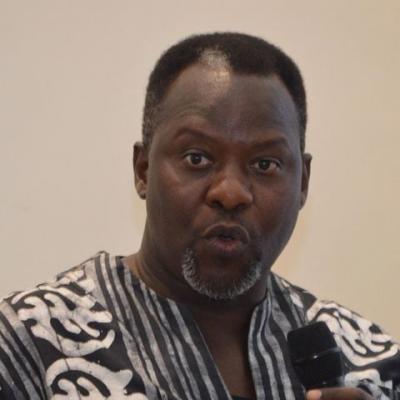
Decentralised sanitation system can reduce pollution in Nairobi says UN-Habitat official
Effective management of sanitation and wastewater will lessen the pollution load on local water resources in Nairobi and other urban areas of Kenya.
The growing challenge in dense urban settlements, the rapidly increasing urbanisation rate of 4.5 per cent per annum and rising settlement densities in low-income urban and peri-urban areas are piling pressure on the urgent need for sanitation technologies and management systems that are robust and affordable.
“A lot of effort has been put into water delivery with very limited investment in sanitation and wastewater which is affecting the quality of water,” said Mr Pireh Otieno, an expert in governance and leader of the water and sanitation team at the UN Habitat headquarters in Nairobi.
Mr Otieno said in many developing countries, centralised sewerage and wastewater treatment systems cover only a portion of larger urban areas, and are often not yet planned for smaller towns and densely populated, low-income areas of cities.
The official was speaking recently on the key topic titled “Public policies for access to water in Africa” during a workshop on water issues in Africa for East African journalists in Nairobi.
“On-site sanitation is often inappropriate in the denser settlements and slum areas, thus requiring intermediate and complementary solutions. Decentralised wastewater treatment systems (DEWATS) connected to simplified sewer systems or communal sanitation centres have the potential to close the gap between on-site and centralised systems,” he said.
Sanitation improvements
He added: “Community-managed DEWATS offer the possibility of swift sanitation improvements in high-priority neighbourhoods that communities can manage themselves, where local government does not yet provide a full sanitation service.”
“Water and sanitation not only drastically improve the quality of lives; it can save lives. Africa's cities are growing at an unprecedented rate. In Kenya alone, the urban population will more than triple to 40 million by 2050. This rapid urbanisation has huge implications for water use and wastewater management, which already face rising water and sanitation demands and problems, such as pollution and overexploitation,” said the official.
“African governments should think of ways to manage wastewater. There is very little data on how to track the impact of wastewater on the environment. African people are concerned about access not thinking about how you manage waste. The management of waste water is not about developing more sewers. Sewers are the most expensive,” he added.
The latest water and sanitation for the urban poor report in Kenya indicates that access to improved sanitation facilities remains low at 31 per cent in urban areas, with access to safely managed sanitation estimated at 26 per cent while sewer coverage is estimated at 16 per cent with 84 per cent of the Kenyans depending on onsite sanitation.
The current population of Kenya is 57 million as of the end of February 28, 2023, based on Worldometer elaboration of the latest United Nations data.
The World Health Organisation (WHO) and the United Nations Children's Fund (UNICEF) joint Monitoring Program (JMP) estimates that only 31 per cent of urban residents in Kenya have access to improved facilities.
Low sewer coverage
According to the Water Services Regulatory Board (WASREB), the low sewer coverage is putting over half of the population at heightened risk of diseases and death due to poor access to safe water, sanitation and hygiene, which is responsible for over 75 per cent of Kenya’s total disease burden.
The poor sanitation is piling pressure on the government to increase the proportion of the population using safely managed sanitation services and meet the Sustainable Development Goal (SDG) 6.2 on sanitation and Kenya Vision 2030 sanitation targets.
WASREB estimates that about Sh433 billion would be required to fund urban sanitation programmes due to rapid urbanisation which is double the global average.
According to the National Water Master Plan 2030, to increase the conventional sewerage coverage to at least 80 per cent by 2030, 96 per cent of the required resources of Sh663 billion will be needed for new urban sewerage infrastructure development, with the remaining four per cent required for rehabilitation of existing dilapidated systems.
To realise these ambitious investment targets, the National Water Master Plan 2030 estimates an annual investment of Sh127 billion is required.

Water Security: Issues and challenges for India
Water security in India refers to the availability of adequate and clean water resources to meet the country's growing water demand, while ensuring the sustainability of the water ecosystems. This is in line with the definition of water security provided by UN Water, which is a United Nations inter-agency coordination mechanism on all freshwater-related issues. It involves ensuring access to safe drinking water, managing water resources effectively, and reducing the risk of water-borne diseases. In India, water security is a major challenge due to over-extraction of groundwater, water pollution, and unequal distribution of water resources. Addressing water security is critical for the country's economic and social development, as well as the health and well-being of its citizens.
Concept of Traditional and Non-Traditional Threat
Water security has been recognized as a critical issue within government policy circles and among various stakeholders such as civil society organizations, academics, and researchers. The growing recognition of water as a finite and valuable resource, coupled with the increasing risks and impacts of water-related issues, has led to water security being perceived as a threat to India's development and sustainability. Therefore, various measures have been taken to address the challenges related to water security in India, including the implementation of policies, programs, and initiatives aimed at improving water management, conservation, and governance.
Traditionally, water security was seen as a technical issue of water supply and management, with a focus on meeting water demand through infrastructure development. However, it has now expanded to encompass a broader range of social, economic, and environmental factors, including water quality, water allocation, and water governance.
In India, water security has been recognized as a non-traditional threat due to the interlinkages between water and other critical sectors such as agriculture, energy, health, and the environment. The country faces a range of water-related challenges, including water scarcity, water pollution, floods, and droughts, which have significant impacts on various aspects of society and the economy.
The concept of non-traditional threat recognises water security as a complex and interconnected issue that requires a holistic and integrated approach, involving multiple stakeholders and a range of policies and practices. This approach recognises the need for better water governance, enhanced water management practices, and increased investment in water infrastructure and technology.
Source: Next IAS
Issues and Challenges
Water security in India faces several issues and challenges that threaten the sustainability and development of the country. These include over-extraction of groundwater, water pollution, inadequate distribution, lack of proper water management, climate change, and conflicts over water. India relies heavily on groundwater, which is being depleted at an alarming rate due to over-extraction for irrigation, industrial, and domestic use. The increasing industrialization and urbanization has led to widespread water pollution, contaminating rivers and groundwater, and making it unsafe for consumption. There is unequal distribution of water resources across the country, with some regions facing severe water scarcity while others have surplus water. India lacks proper water management systems, with inefficient irrigation systems, leaky water supply networks, and insufficient wastewater treatment facilities. Climate change has resulted in irregular monsoon patterns and increased frequency of natural disasters, causing further strain on India's water resources. With increasing water scarcity, there are growing conflicts between different states, communities, and sectors over the distribution and use of water. Addressing these challenges is crucial for ensuring water security in India and sustainable development of the country.
Way Forward
Improving India's water security will require a combination of policy, technology, and behavioral solutions. One essential strategy is to enhance water governance systems, with clear policies, laws, and institutions to manage and allocate water resources effectively and equitably. Efficient water management practices like rainwater harvesting, conservation, and recharge should be adopted to reduce water waste and increase availability.
The country needs to invest in water infrastructure such as dams, reservoirs, and canals, to improve water storage capacity, distribution, and mitigate the impacts of water-related disasters. Promoting the adoption of water-saving technologies like drip irrigation, micro-irrigation, and water-efficient appliances can significantly reduce water consumption and improve productivity. Additionally, the government should implement and enforce regulations to prevent water pollution and ensure access to safe drinking water, especially in rural and urban areas. Changing behavior is also critical, such as reducing water usage, avoiding water waste, and improving water hygiene practices. Collaboration and active engagement of various stakeholders including the government, civil society, private sector, and communities are essential to addressing these challenges.
Addressing these challenges requires a collaborative and multi-stakeholder approach, with the active engagement of government, civil society, private sector, and communities. Investing in water security will not only improve water availability and quality, but will also contribute to the overall economic and social development of India.

Wanjiru Defies Odds To Farm In Kenya’s Harsh Seasons
NYANDARUA COUNTY, KENYA – Situated just a few kilometers off Kenya’s Sasumua Dam is 58 years old Phillis Wanjiru a mother of four children who has defied all the odds to grow crops throughout the year in rather Kenya’s harsh dry conditions.
The resident of Njabini Township in Nyandarua County on the South End of the Aberdare Mountains, Wanjiru grows Passion Fruits, Cabbages, Strew Berries, Pumpkins, Pawpaws, Guavas and Yams among others.
She uses her home made irrigation means of tapping rainwater and transporting it to a pond, a rather unique idea in the area.
“This is family land. We grow food crops and Cash crops throughout the year with my husband through water harvesting and irrigation,” said Wanjiru.
This was during a visit to her home by a group of East African Science Journalists who were there to see how she has managed to continue with farming despite the harsh and long dry spells in Kenya’s Central Region part without rainfall.
Using the 2.5 acres family land, Wanjiru harvests water from their house during the rain season and through locally modified means, she transports it to a water pond that was dug with the use of polythene bags.
The polythene bags help to keep the water for longer periods of time by preventing evaporation and draining.
It’s from the pond that she collects water that helps her irrigate the 2.5 acres of land to grow the different crops and rare some animals like cattle and sheep.
“I no longer have water stress since I started using water harvesting methods and the borehole.
“In 1993, they stopped us from getting water from Sasumua Dam,” She said.
To supplement her rain harvested water, Wanjiru dug a bore hole that supplies her water for home consumption as well as irrigation for the green house, she set up nearby for seed breeding and germination.
She sells her crops to Nairobi City markets and to the neighborhood of Njabini Township.
The Science Journalists excursion was sponsorsed by Africa 21 and the Water Diplomat.
